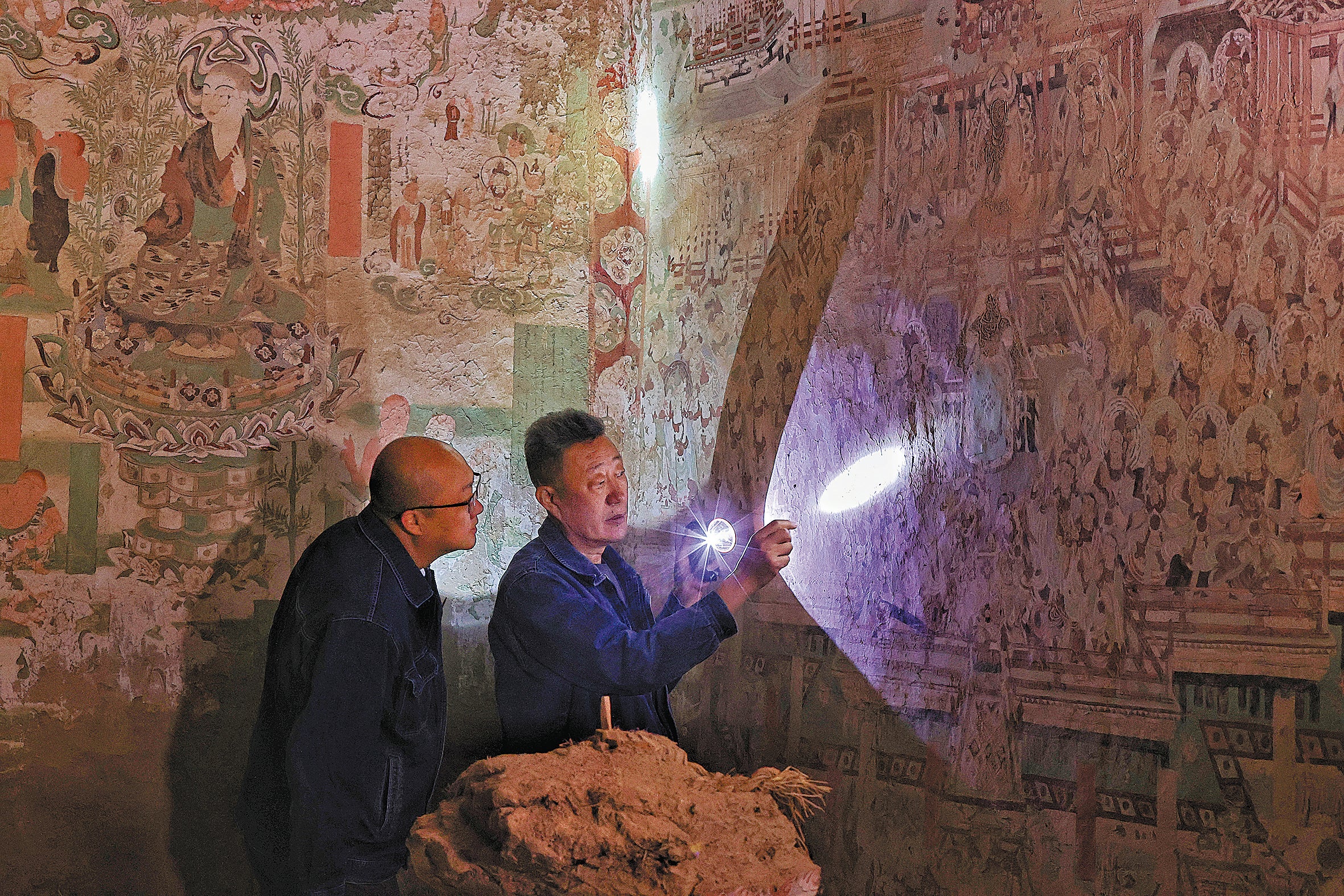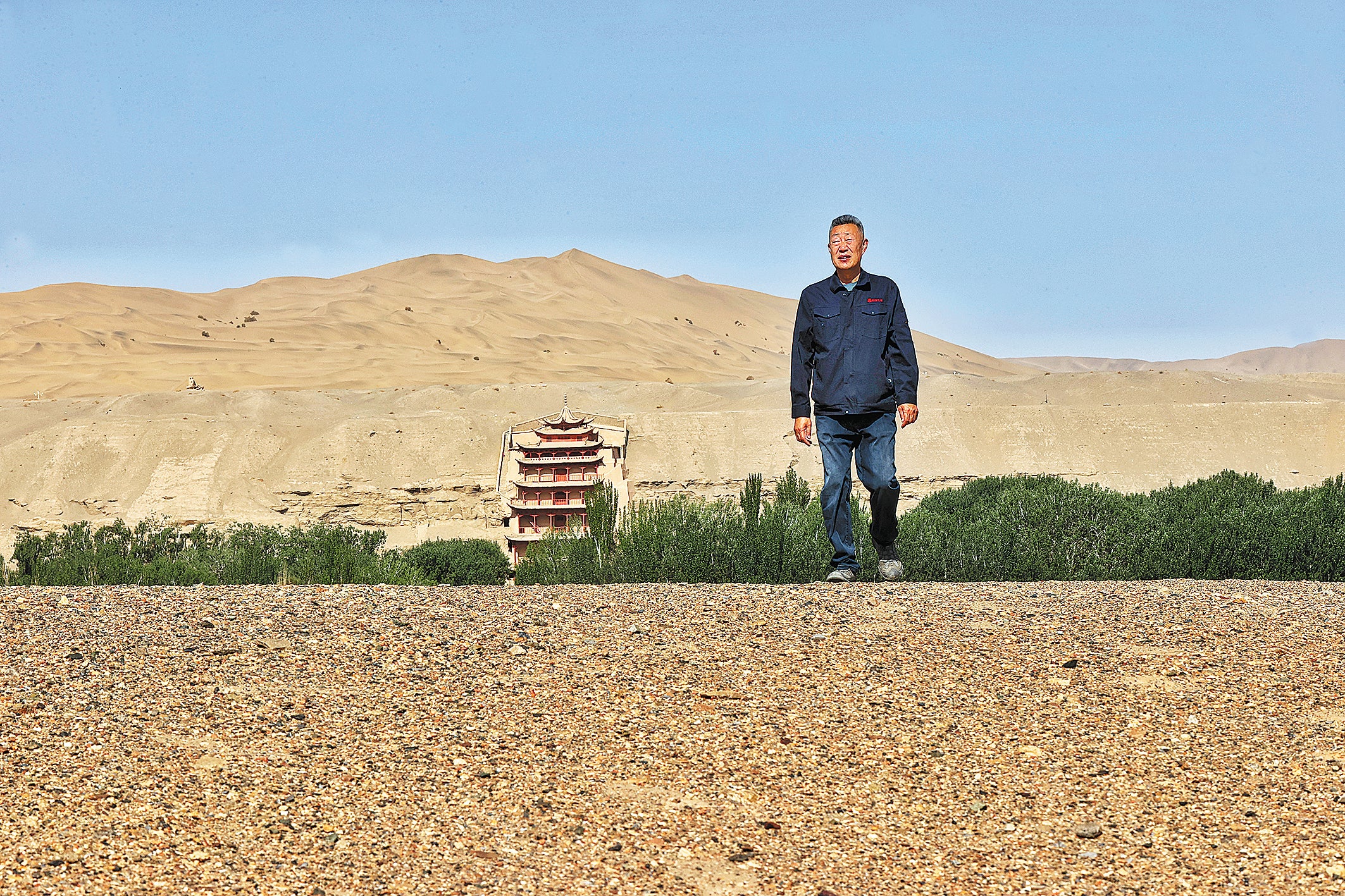Dedicated to a new age of restoration
THE ARTICLES ON THESE PAGES ARE PRODUCED BY CHINA DAILY, WHICH TAKES SOLE RESPONSIBILITY FOR THE CONTENTS

It’s a race against time, as generations of cultural heritage conservators at the Dunhuang Academy endeavour to protect the artistic charm of the Mogao Caves, a Unesco World Heritage Site, from erosion by sand and wind.
Restorer Li Bo is a member of the team that is dedicated to protecting the 480,000 square feet of murals and more than 2,400 painted sculptures of the 735 caves of the site, the construction of which spans a millennium, from the 4th to the 14th centuries.
Located in the far west of Northwest China’s Gansu province, the city of Dunhuang and its neighbouring areas – home to the Mogao Caves and other historical monuments witnessing the apex of the ancient, prosperous Silk Road – just unrolled a saga testifying to communication among civilisations across Eurasia.
A sophisticated mural restorer such as Li, who has spent more than 30 years in the business, can restore only an area about the size of a sheet of paper each day.

The past three decades have seen him repair around 16,000 square feet of murals and more than 300 sculptures – the small ones are only about eight inches tall, while the largest reach more than 66 feet in height.
The years have also brought him the exclusive joy of holding a silent dialogue with the mural characters every working day.
In front of a 10th-century mural featuring a mass audience listening to the Buddha at the Yulin Caves in Guazhou county, around two hours’ drive from the Mogao Caves, Li mimicked the facial expressions of the characters when performing his routine work.
The site, which, archaeologists estimate, dates back to the Northern Wei Dynasty (386-534), shares cultural and artistic consistency with the Mogao Caves. The Dunhuang Academy also oversees the Yulin Caves.
As the mural vividly portrays, some listeners slightly lean forward, thirsty for knowledge. Some are puzzled, some look around. Some whisper to others, while some doze off.
“It fills me with joy to think that I have contributed to their survival and inheritance,” Li says.
He adds that, as his knowledge accumulates and his understanding of the artworks deepens, it becomes even more frustrating when his hands cannot keep up with his mind, like a doctor who knows what disease a patient has, but fails to treat it.
Commonly seen “diseases” affecting the murals include cracking and flaking, as well as efflorescing that is caused by changes in temperature and humidity of the caves, and the deposition of salts.
To restore a mural requires an all-rounder. The restorer should know painting, master the skills of a mason and have some knowledge of chemistry and physics, to be able to recognise the problems, their corresponding causes and deliver a solution. They must also select proper materials and tools, and conduct experiments, before formally carrying out the restoration and evaluating the effect afterward.
The restoration should respect the original work and aim to maintain the status quo of the murals rather than repainting them, Li says.
Li’s career has witnessed and benefited from the Dunhuang Academy’s evolution, from rescuing cultural heritage, to scientific and preventive conservation, making progress in both research and implementation of preservation measures.
Interdisciplinary achievements, such as updated research findings in materials science, and new digitalisation technology, have greatly facilitated their work.
According to Guo Qinglin, deputy director of the academy who is in charge of cultural heritage conservation, more than 150 conservators and restorers from the academy now work on the front line, minding the caves.
Thanks to rich experiences garnered by the academy in the past decades, conservators there have supported preservation projects of earthen heritage sites and murals in 20 provincial-level administrative regions across the country. They have also contributed solutions to similar sites in other countries such as Kyrgyzstan and Myanmar, according to Guo.
